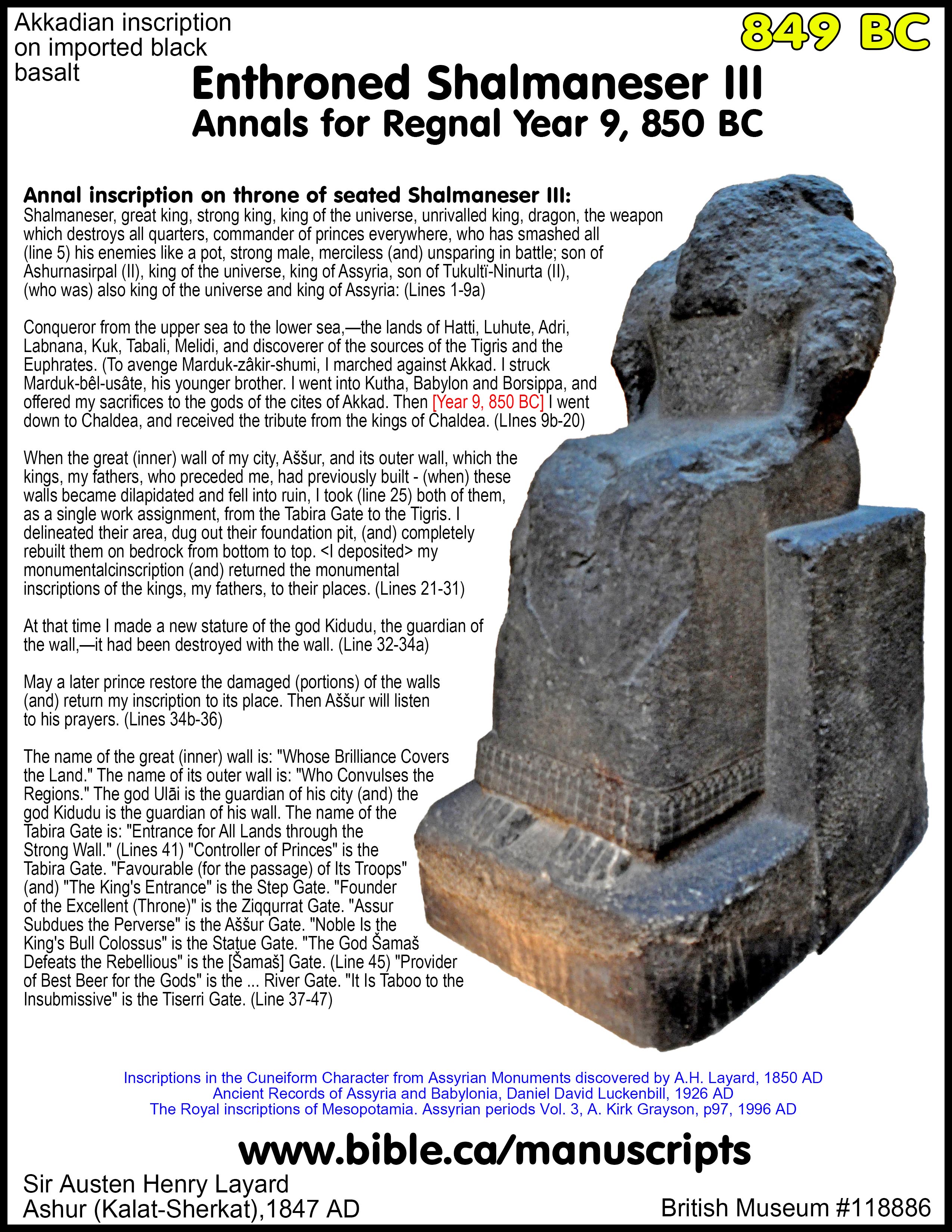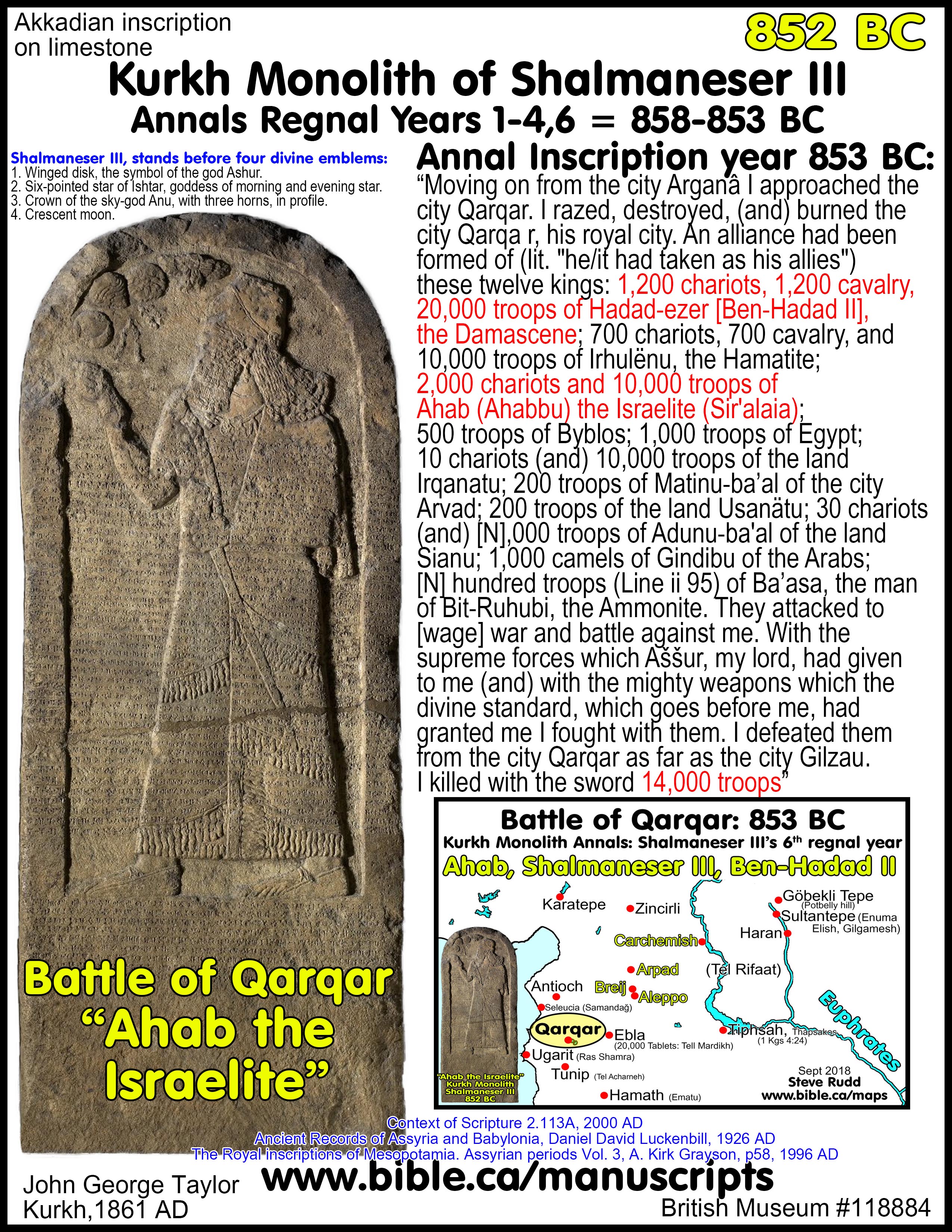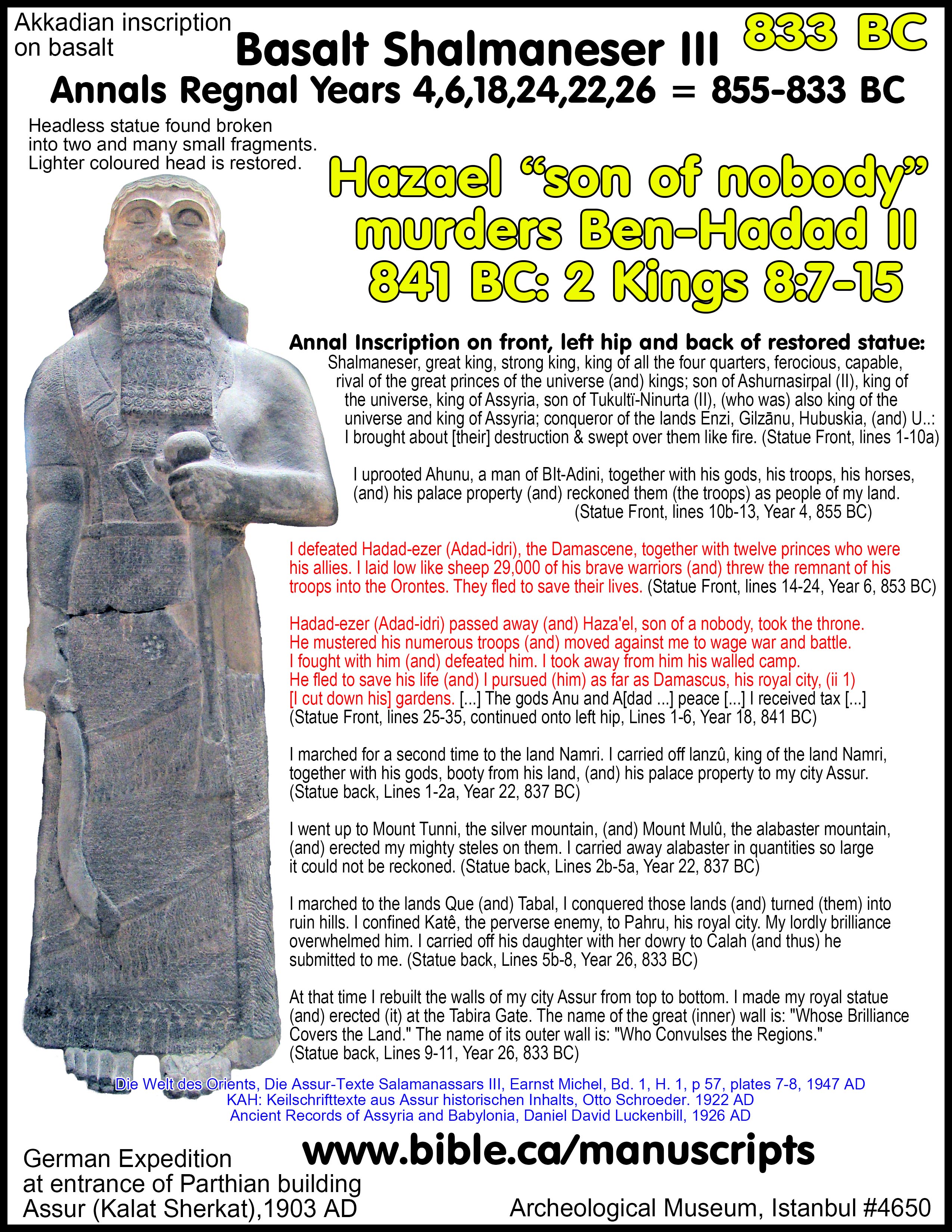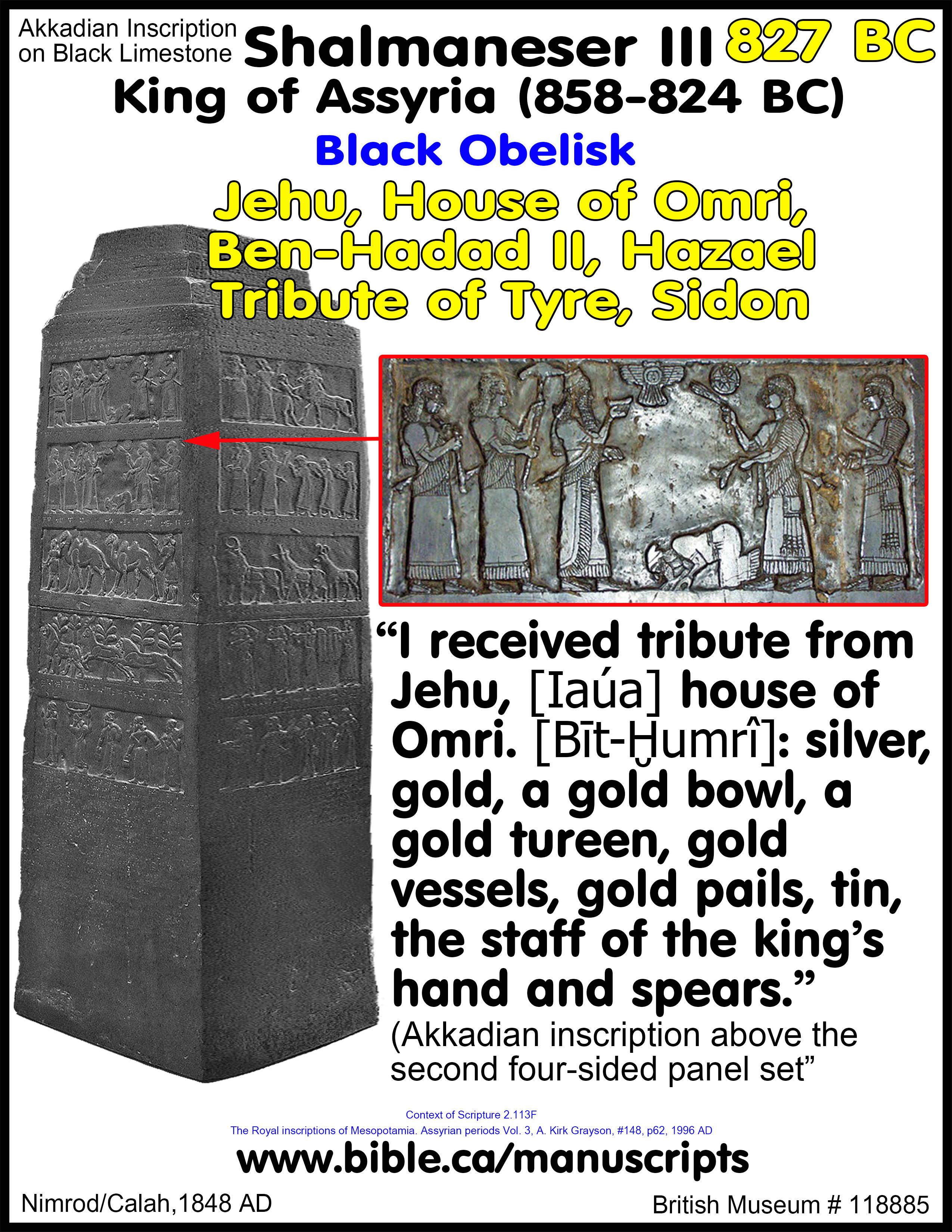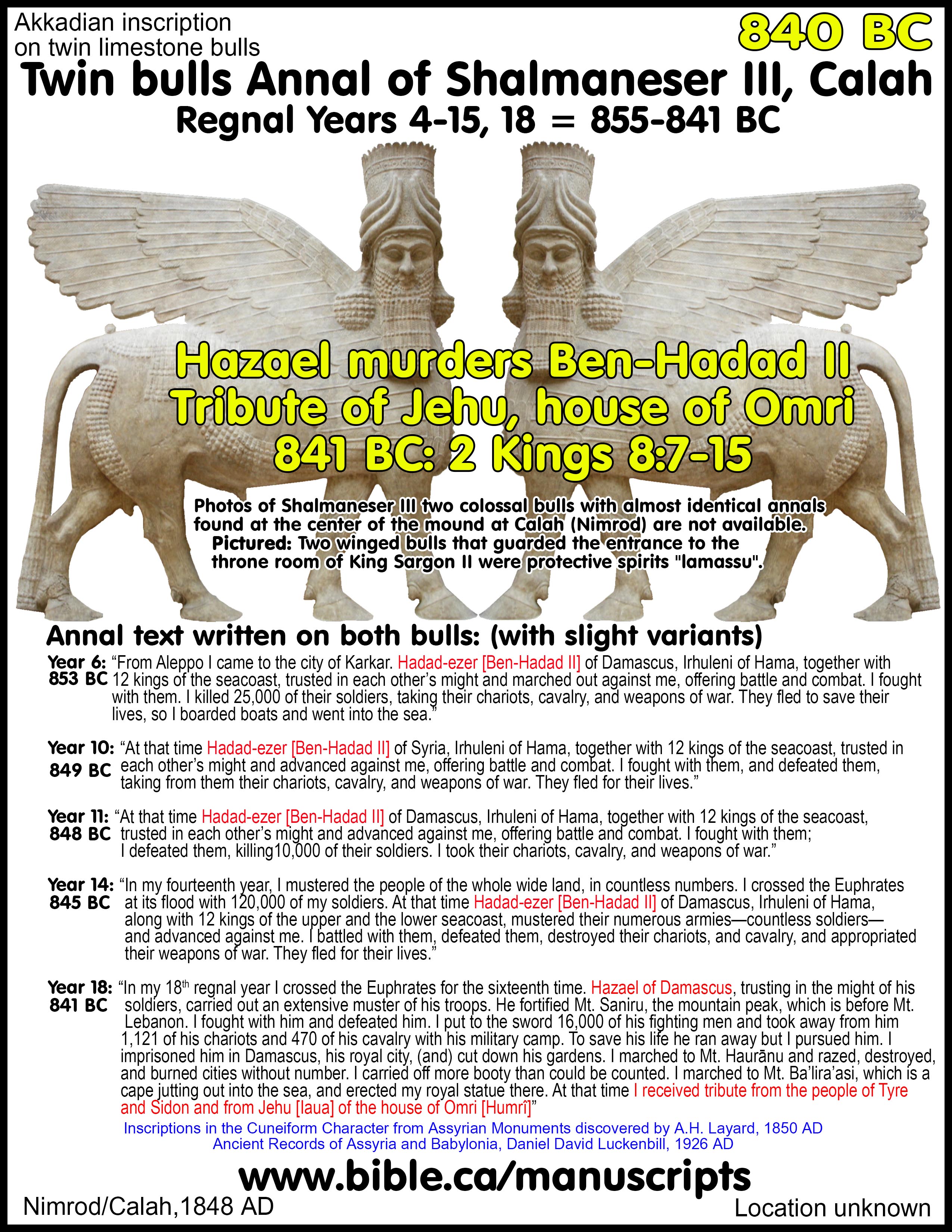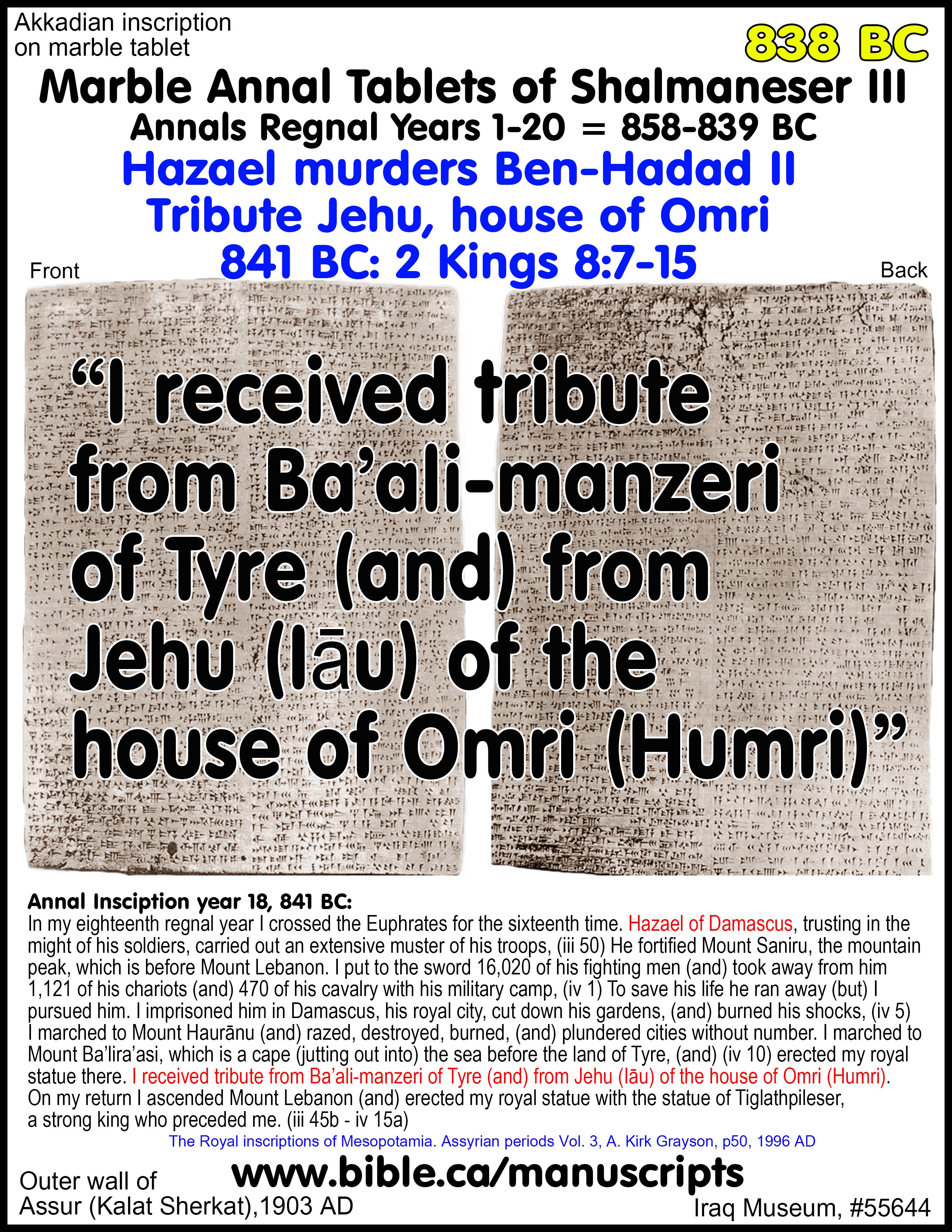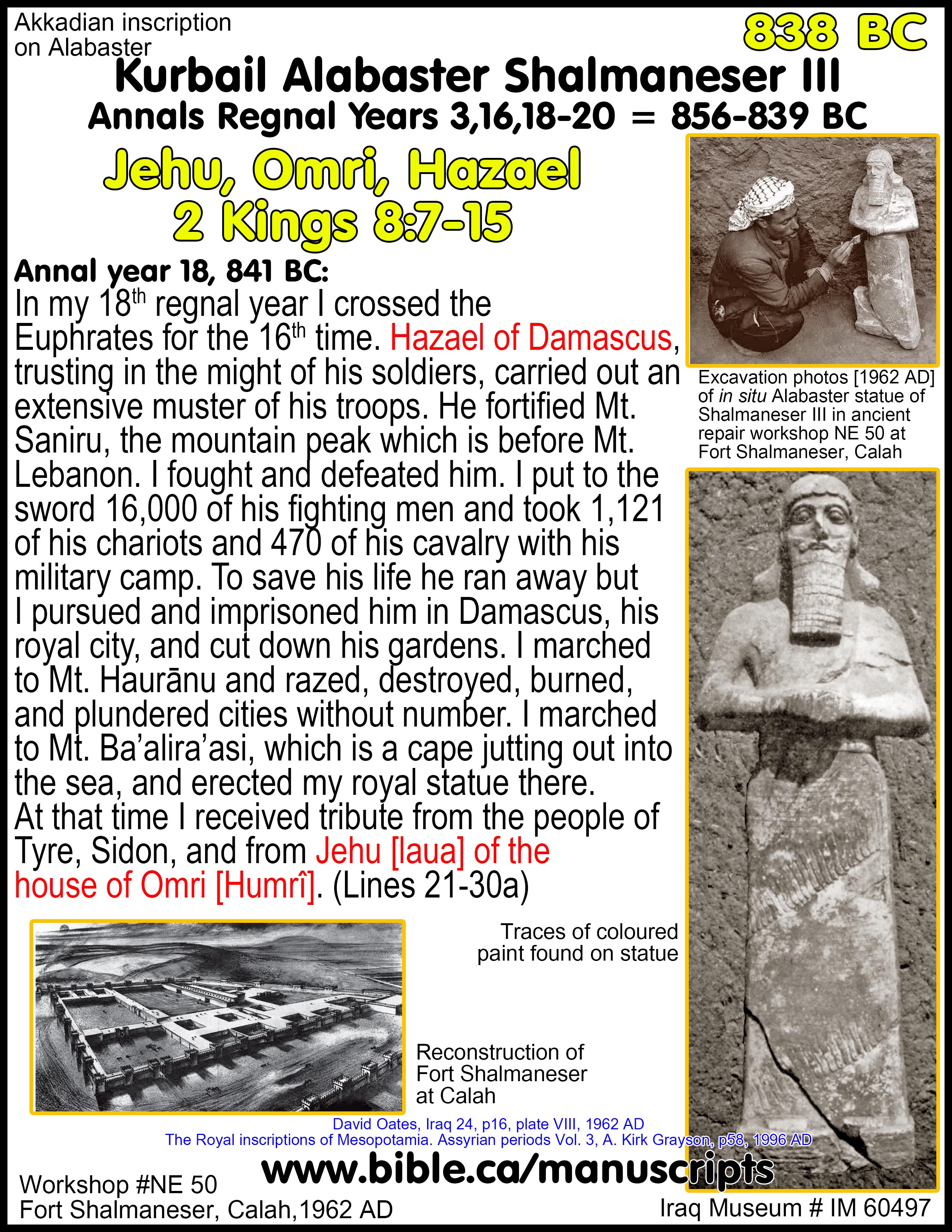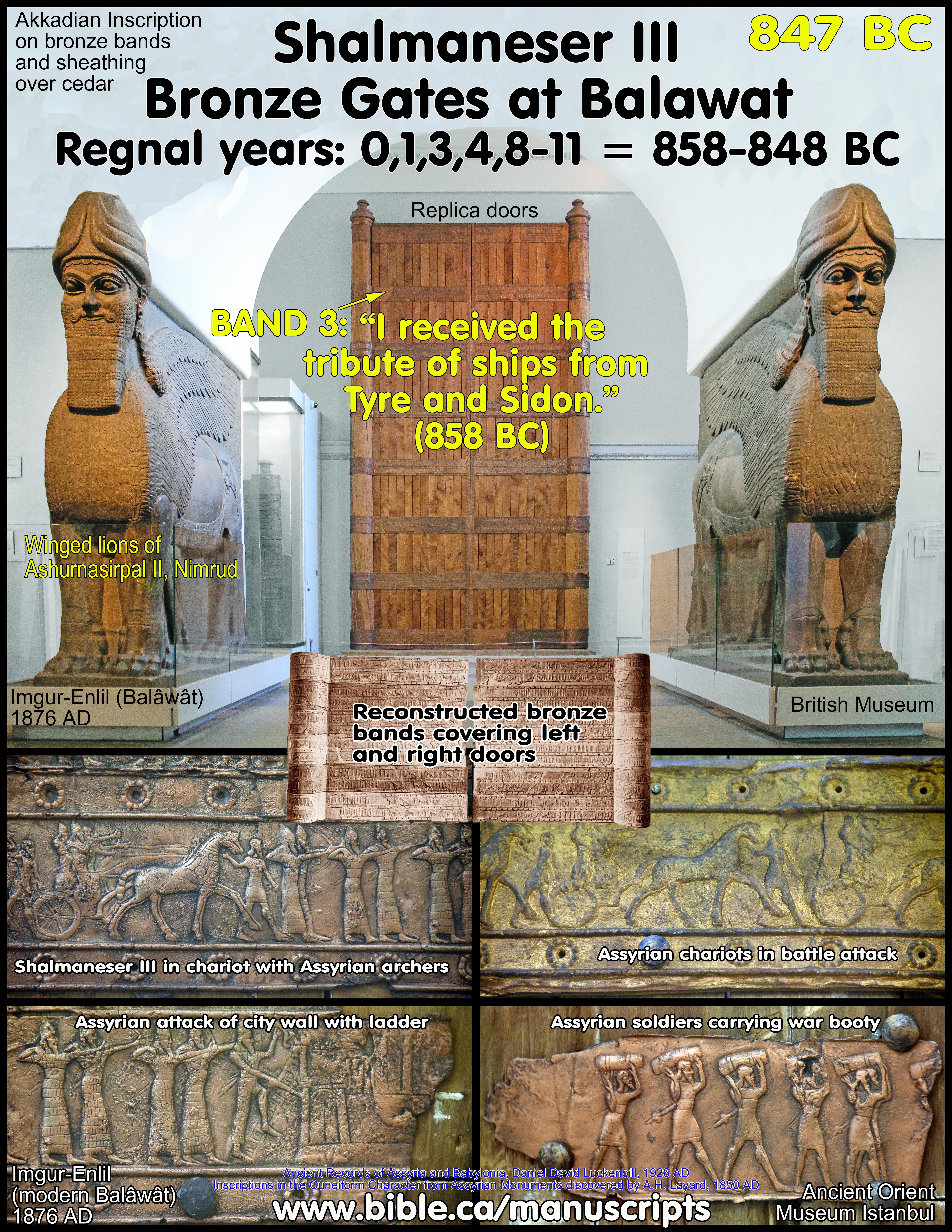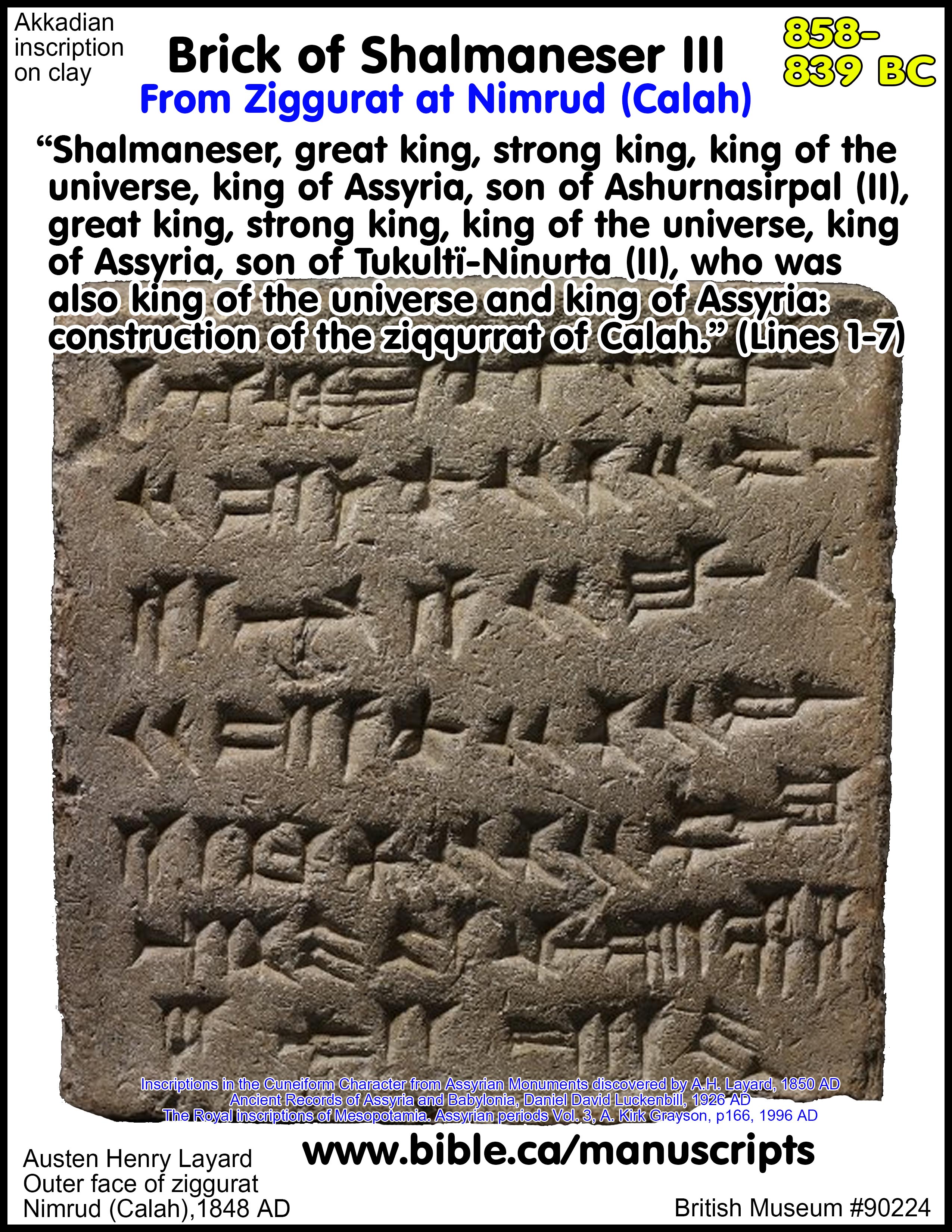Black Basalt (headless) Throne of Shalmaneser III: 850 BC
Shalmaneser III, King of Assyria 855-841 BC
See also: Detailed outline on Shalmaneser III
|
Basalt Throne of Shalmaneser III |
|
|
Date of inscription |
849 BC |
|
Annal years |
850 BC (Regnal year 9) |
|
Glyptic object |
Akkadian inscription on imported black basalt |
|
Discovery |
Sir Austen Henry Layard Ashur (Kalat-Sherkat),1847 AD |
|
Current location |
British Museum #118886 |
|
Bible names |
Shalmaneser III is a key figure in the Bible. |
|
Digging up Bible stories!
Shalmaneser III is a key figure in the Bible and here is a statue of his throne.
“What we read in the book, we find in the ground” |
Introduction:
1. Shalmaneser III is a key figure in the Bible who interacted with Ahab, Jehu, Ben-Hadad II and Hazael.
2. Two other Assyrian kings are names on the throne:
a. Ashurnasirpal (II)
b. Tukultď-Ninurta (II)
3. Sources:
a. Inscriptions in the Cuneiform Character from Assyrian Monuments discovered by A.H. Layard, 1850 AD
b. Ancient Records of Assyria and Babylonia, Daniel David Luckenbill, 1926 AD
c. The Royal inscriptions of Mesopotamia. Assyrian periods Vol. 3, A. Kirk Grayson, p97, 1996 AD
4. See Detailed outline on Shalmaneser III
I. About the Black basalt headless throne statue:
1. “This text is on a stone statue of the king discovered by Layard at Aššur in the spring of 1847. The statue's head is broken off. The king is shown seated and the text is inscribed on the two sides and the back of his throne. From Layard's description of the location in which the statue was found, Andrae concluded that it had originally been erected inside the Tabira Gate and this is corroborated by the inscription's interest in that gate (lines 40-41 ). The text begins (lines 1-8) with the royal name, epithets, and genealogy. It then (lines 9-20) describes briefly the king's conquests, first in the east and northeast, and then in Babylonia. The latter is a clear reference to the ninth regnal year and thus the text must date in or shortly after 850 BC. The main concern of the inscription, however, is the walls and gates of Aššur (lines 21-31), which Shalmaneser extensively rebuilt. From the text it appears that the inner and outer walls were joined in some way to form a single fortification. Andrae (Festungswerke p. 99) concluded from his excavations on the northwest frontier of the city that Shalmaneser had rebuilt the inner and outer walls here in such a way as to enclose fully the terrace of Tukultď-Ninurta’s New Palace. This created a unified barricade at the northwest corner. Similar operations were probably carried out on other parts of the walls. The inscription continues (lines 32-33) with the statement that the statue of Kidudu, guardian of the wall, was refashioned. Then (lines 34-36) come blessings on a later prince who restores the walls. The text concludes (lines 37—47) with the epithets of the two walls and the eight gates, presumably gates which were renovated in the course of rebuilding the walls. This same passage appears, with some variation, in the so-called Address Book of the Gods (Frankena, Tâkultu pp. 124-25; Menzel, Tempel 2 pp. T 146-56; and George, Topographical Texts pp. 176-77) lines 120-27 and 134-39. Regarding this passage, and the gates in general, see Unger, RLA 1 pp. 175-78 §§14—22 and Miglus, ZA 72 (1982) pp. 266-79. COMMENTARY The stone (BM 118886 = 49-5-2,17) is 135 cm high. It had some flaws before the text was inscribed as is clear from the breaks in the following lines, where obviously no signs are missing: 2, 3, 15, 24, and 28. There are several engraving errors: lines 3, 4, 19, 20, 22, 25, and 29. The text has been collated.” (The Royal inscriptions of Mesopotamia. Assyrian periods Vol. 3, A. Kirk Grayson, p97, 1996 AD)
III. Translation of the statue of Shalmaneser III on his throne:
|
Date Regnal Year Nisan |
Translated text |
|
Jan 858 BC Year 0 intro |
Shalmaneser, great king, strong king, king of the universe, unrivalled king, dragon, the weapon which destroys all quarters, commander of princes everywhere, who has smashed all (line 5) his enemies like a pot, strong male, merciless (and) unsparing in battle; son of Ashurnasirpal (II), king of the universe, king of Assyria, son of Tukultď-Ninurta (II), (who was) also king of the universe and king of Assyria: (Lines 1-9a)
Conqueror from the upper sea to the lower sea, the lands yatti, Luhutu, Damascus, Lebanon, Que, Tabal, (and) Melid; the one who has seen the sources of the Tigris and Euphrates. To avenge Marduk-zākir-šumi (line 15) I marched to Akkad. [I] defeated Marduk-bēl-usāte, (his) younger brother. I entered Cuthah, Babylon, (and) Borsippa, (and) presented my sacrifices to the gods of the towns of Akkad. I went down to Chaldaea [850 BC] (and) received tribute from all the kings of Chaldaea. (Lines 9b-20)
When the great (inner) wall of my city, Aššur, and its outer wall, which the kings, my fathers, who preceded me, had previously built — (when) these walls became dilapidated and fell into ruin, I took (line 25) both of them, as a single work assignment, from the Tabira Gate to the Tigris. I delineated their area, dug out their foundation pit, (and) completely rebuilt them on bedrock from bottom to top. <deposited> my monumental inscription (and) returned the monumental inscriptions of the kings, my fathers, to their places. (Lines 21-31)
At that time (the image of) the god Kidudu, guardian of the wall, as well as this same wall had become dilapidated (and) I fashioned it anew. (Lines 32-34a)
May a later prince restore the damaged (portions) of the walls (and) return my inscription to its place. Then Aššur will listen to his prayers. (Lines 34b-36)
The name of the great (inner) wall is: "Whose Brilliance Covers the Land." The name of its outer wall is: "Who Convulses the Regions." The god Ulāi is the guardian of his city (and) the god Kidudu is the guardian of his wall. The name of the Tabira Gate is: "Entrance for All Lands through the Strong Wall." (lines 41-47)
"Controller of Princes" is the Tabira Gate. "Favourable (for the passage) of its Troops" (and) "The King's Entrance" is the Step Gate. "Founder of the Excellent (Throne)" is the Ziqqurrat Gate. "Assur Subdues the Perverse" is the Aššur Gate. "Noble Is the King's Bull Colossus" is the Statue Gate. "The God Šamaš Defeats the Rebellious" is the [Šamaš] Gate. (45) "Provider of Best Beer for the Gods" is the ... River Gate. "It Is Taboo to the insubmissive" is the Tiserri Gate. (Lines 37-40) |
Conclusion:
1. Shalmaneser III is a key figure in the Bible and here is a statue of his throne.
2. Two other Assyrian kings are names on the throne:
a. Ashurnasirpal (II)
b. Tukultď-Ninurta (II)
3. What you read in the book, you find in the ground!
4. Find me a church to attend in my home town this Sunday!
|
9 Inscriptions of Shalmaneser III |
||
|
|
|
|
|
|
|
|
By Steve Rudd: Contact the author for comments, input or corrections.
